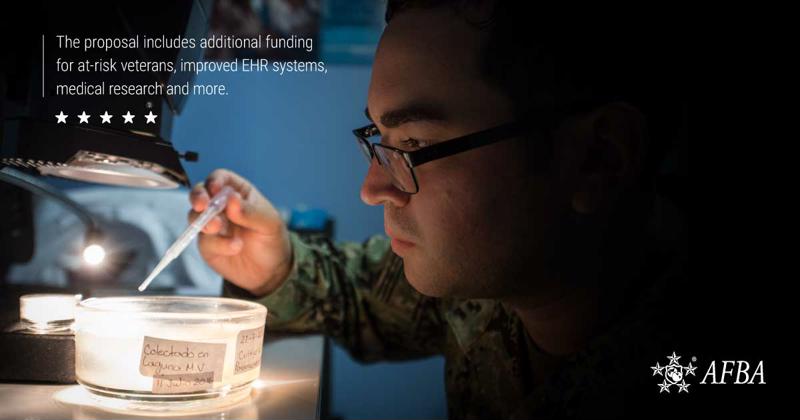President Donald Trump's 2019 federal budget proposal would increase the budget for the Department of Veterans Affairs by $198.6 billion, according to Military Times. That part of the proposal drew widespread support, particularly from veterans advocates.
A detailed breakdown of the proposal indicates a comprehensive strategy to address the issues that affect today's veterans, including:
- $1.6 billion in funding for support services that assist at-risk and homeless veterans.
- $1.2 billion allocated to modernize veterans' electronic health records.
- $727 million dedicated to medical and prosthetic research.
- $511 million to fund gender-specific healthcare services for female veterans.
- $381 million to find and support alternative pain management methods that reduce veteran reliance on opioids.

If passed, the proposal would be a significant increase in VA funding occurring as budgets for other departments are constrained. The VA budget was less than $49 billion in fiscal year 2001, per Military Times, and reached $93.7 billion in fiscal 2009. Similarly, President Trump allocated more money to the VA just last year when he signed the VA Choice and Quality Employment Act. This bill received widespread bipartisan support and, again, praise from veterans's advocate groups.
The act allocated $3.9 billion in funding to support the Veterans Choice Program, which was nearly bankrupt at the time, according to Stars and Stripes. The majority of the funding – $2.1 billion, to be precise – was designated for the Choice program to help veterans find care provided outside VA clinics and hospitals. The remaining $1.8 billion will be used to hire more staff, improve existing VA facilities and open 28 new clinics.
"This bill will ensure veterans will continue to have the ability to see the doctor of their choice," Trump said. "So important. Our great veterans deserve only the best and that's what they're getting."
The future of the VA budget – what would the money be spent on?
In all likelihood, the allocated funding will be, in some ways, spent on health-related technology. This theory is based on a recent report reviewed by the Federal Times which found the VA is on course to be the top agency for government health IT spending within the next five years. By 2020, the VA will account for 40 percent of such spending. Currently, the Department of Health and Human Services is the top health IT spender, but the Affordable Care Act mitigated those expenses somewhat.
Much of what will cause the VA to overtake the HHS is a new electronic health records system that the former plans to implement. Last year, then-Secretary of Veterans Affairs David Shulkin announced the agency would use the same platform as the Department of Defense to better allow both agencies to transfer health records as needed. This would make the transition from active servicemember to veteran much easier from a healthcare perspective, as it would eliminate the need for doctors and servicemembers to fill out separate forms with the same information.
"Our new electronic health records system will enable VA to keep pace with the improvements in health IT and cybersecurity, which the current system, VistA, is unable to do," said Scott Blackburn, the VA's acting Chief Information Officer.
The initial rollout of the new EHR system is expected to begin June 2019, which aligns with the above budget proposal and the prediction that VA health IT spending will soon increase. Per a separate Federal Times article, project is expected to cost $10 million and would be the biggest EHR system implementation in history.


